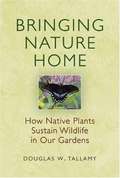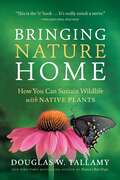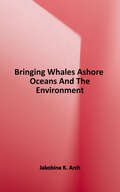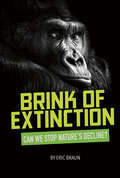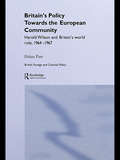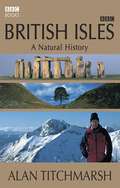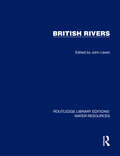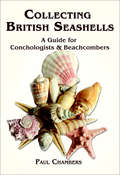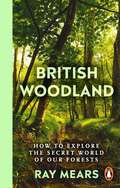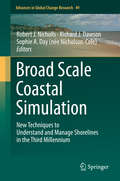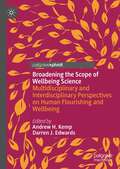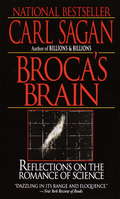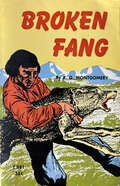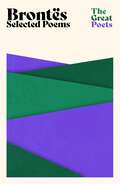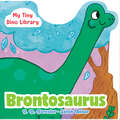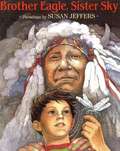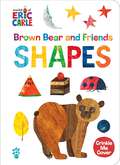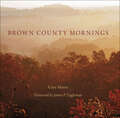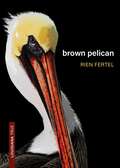- Table View
- List View
Bringing Nature Home: How You Can Sustain Wildlife With Native Plants
by Douglas W. TallamyThe pressures on wildlife populations today are greater than they have ever been and many gardeners assume they can remedy this situation by simply planting a variety of flowering perennials, trees, and shrubs. As Douglas Tallamy points out in this revelatory book, that assumption is largely mistaken. Wild creatures exist in a complex web of interrelationships, and often require different kinds of food at different stages of their development. There is an unbreakable link between native plant species and native wildlife. When native plant species disappear, the insects disappear, thus impoverishing the food source for birds and other animals. Fortunately, there is still time to reverse this alarming trend, and gardeners have the power to make a significant contribution toward sustainable biodiversity. By favoring native plants, gardeners can provide a welcoming environment for wildlife of all kinds. Healthy local ecosystems are not only beautiful and fascinating, they are also essential to human well-being. By heeding Douglas Tallamy's eloquent arguments and acting upon his recommendations, gardeners everywhere can make a difference.
Bringing Nature Home: How You Can Sustain Wildlife with Native Plants, Updated and Expanded
by Douglas W. Tallamy Rick Darke“If you cut down the goldenrod, the wild black cherry, the milkweed and other natives, you eliminate the larvae, and starve the birds. This simple revelation about the food web—and it is an intricate web, not a chain—is the driving force in Bringing Nature Home.” —The New York Times As development and subsequent habitat destruction accelerate, there are increasing pressures on wildlife populations. But there is an important and simple step toward reversing this alarming trend: Everyone with access to a patch of earth can make a significant contribution toward sustaining biodiversity. There is an unbreakable link between native plant species and native wildlife—native insects cannot, or will not, eat alien plants. When native plants disappear, the insects disappear, impoverishing the food source for birds and other animals. In many parts of the world, habitat destruction has been so extensive that local wildlife is in crisis and may be headed toward extinction.Bringing Nature Home has sparked a national conversation about the link between healthy local ecosystems and human well-being, and the new paperback edition—with an expanded resource section and updated photos—will help broaden the movement. By acting on Douglas Tallamy's practical recommendations, everyone can make a difference.
Bringing Whales Ashore: Oceans and the Environment of Early Modern Japan
by Jakobina K. ArchJapan today defends its controversial whaling expeditions by invoking tradition--but what was the historical reality? In examining the techniques and impacts of whaling during the Tokugawa period (1603-1868), Jakobina Arch shows that the organized, shore-based whaling that first developed during these years bore little resemblance to modern Japanese whaling. Drawing on a wide range of sources, from whaling ledgers to recipe books and gravestones for fetal whales, she traces how the images of whales and by-products of commercial whaling were woven into the lives of people throughout Japan. Economically, Pacific Ocean resources were central in supporting the expanding Tokugawa state. In this vivid and nuanced study of how the Japanese people brought whales ashore during the Tokugawa period, Arch makes important contributions to both environmental and Japanese history by connecting Japanese whaling to marine environmental history in the Pacific, including the devastating impact of American whaling in the nineteenth century.
Bringing the Beach Home
by Laura AtkinsA heartwarming picture book about the healing power of creativity and nature, Bringing the Beach Home follows a young child who finds calm and connection during a day at the shore—and learns how to carry that feeling home."Delicately warm and lovely. This is an understated yet graceful portrait of a child channeling negative feelings into something beautiful." —Kirkus Reviews When the back-and-forth between Mom&’s and Dad&’s houses feels like too much, Rowan finds peace in the sounds of the waves and the feel of the sand. A wind chime made from collected beach treasures becomes a symbol of comfort, resilience, and the power of creating with our feelings.This lyrical story supports emotional regulation and helps children process transitions through grounded, sensory storytelling.What You&’ll Love Inside: • Nature as Comfort: Shows how the peace of the natural world can ease anxiety and foster connection. • Creating with Our Feelings: Encourages emotional expression through imaginative, hands-on projects. • Visual Beauty: Lush, expressive illustrations and a cover rich with detail and texture bring the beach—and Rowan&’s journey—vividly to life. • Family-Centered Resilience: Highlights the strength of family bonds and offers an empowering lens for children navigating shared custody or life&’s many changes.A powerful story that gives children tools to process change—and reminds them that they can carry peace within them wherever they go.
Bringing the Outside In
by Mary Mckenna SiddalsA rollicking book that reminds young readers to go outside and play! "We're bringing the outside in, oh, bringing the outside in. . . ." Nothing takes the place of splashing in a puddle or jumping into a pile of autumn leaves. Along with the mud and sand that gets tracked indoors come memories that live forever! Mary McKenna Siddals has written a joyous anthem that encourages children to play in the dirt. It will surely resonate with today's overscheduled as well as sedentary kids, and their parents.
Bringing the Rain to Kapiti Plain
by Verna AardemaThe story of how Ki-pat ingeniously brings rain to the arid Kapiti Plain.
Brink of Extinction: Can We Stop Nature's Decline? (Informed!)
by Eric BraunAn intergovernmental science agency recently concluded that one million species, plants, and animals are at risk of extinction because of nature's dangerous decline. What is the cause of this decline? And what are humans doing to protect themselves and other species? Readers will discover the facts behind this issue, the interconnectedness of species on Earth, and the immediate action needed to address the rapid loss of biodiversity.
Britain's Policy Towards the European Community: Harold Wilson and Britain's World Role, 1964-1967 (British Politics and Society)
by Helen ParrHarold Wilson’s apparent volte-face on European Community membership in the autumn of 1966 has long puzzled commentators and Wilson’s colleagues alike. Based on interviews, private papers and recently released evidence from the National Archives, this book provides a fresh interpretation of Wilson’s policy towards the European Community. Studying the development of Britain’s policy between 1964 when Harold Wilson took office, and 1967 when the French President General de Gaulle vetoed Britain’s membership application for a second time, this book examines the rationale behind the British approach, explaining why Wilson launched an initiative for membership when the French seemed certain to obstruct. Also discussing Wilson’s handling of the Cabinet, and shedding light on Britain’s diplomacy towards the Six, this work places British policy towards Europe within the context of its foreign policy transition from a global to a regional role. Examining an important event in Anglo-European relations, this is essential reading for students of post-war British history, and for those interested in Britain’s historical relationship with Europe.
British Isles: A Natural History
by Alan TitchmarshAccompanying a major new BBC1 series presented by Alan Titchmarsh, British Isles: A Natural History is a fascinating journey through the natural history of Britain from its birth to the present day. Written in Alans uniquely readable style, the book chronicles the different periods in Britain's evolution, exploring everything from the geology and geography to the flora and fauna that make up the diverse landscapes of the British Isles. It also includes a gazetteer section detailing where you can explore for yourself Britain's natural treasures. Beautifully illustrated with 180 colour photographs, it will appeal to natural history enthusiasts and everyone who cares about the country they live in. The book contains the latest research gathered in the making of this new landmark series from the BBC's NHU in Bristol. Alan Titchmarsh is a bestselling BBC author and has sold over a million copies of his books which include How To Be A Gardener 1 and 2 and Royal Gardeners.
British Plant Communities
by C. D. Pigott D. A. Ratcliffe D. W. Shimwell J. P. Huntley E. Radford M. J. Wigginton P. Wilkins A. J. C. Malloch H. J. B. Birks M. C. F. ProctorBritish Plant Communities is the first systematic and comprehensive account of all natural, semi-natural and major artificial habitats in Great Britain (excluding Northern Ireland), representing fifteen years of research by leading plant ecologists. The book breaks new ground in wedding the rigorous interest in the classification of plant communities that has characterized Continental phytosociology with the deep traditional concern in Great Britain to understand how vegetation works. The acclaimed series has become firmly established as a framework for a wide variety of teaching, research and management activities in ecology, conservation, and land-use planning.
British Rivers (Routledge Library Editions: Water Resources)
by John LewinOriginally published in 1981, this book describes and interprets the physical nature of British rivers and is authored by leading authors from universities, the Institute of Hydrology and a water Authority. The contents include data on river regimes and catchment characteristics, information on water quality in both polluted and unpolluted rivers, a full discussion of river channels and their erosion and sediment characteristics, and a consideration of river management problems in the distinctive British context. Where possible, nationwide information is presented in map form and many of the maps presented a national picture for the first time. The book will be of interest to students and scientists in a wide range of disciplines: geography, geology, environmental science, hydrology and engineering. Those professionally engaged in environmental management and the water industry should also find it useful. In summary, all who are concerned with rivers – as agents of landscape change, sedimenting phenomena, environmental resources or flood hazards will find this book as relevant now as when it was first published.
British Seashells: A Guide for Collectors and Beachcombers
by Paul ChambersUsing original Victorian prints, by collectable artist George Sowerby, marine biologist and author Paul Chambers has produced the first comprehensive guide to shells for over a century. The original prints are intricately detailed (much better than photographs which lack the exact detail of these drawings) and are a selling point in themselves but will be complemented by informative but accessible text, including families and to show what's edible, dangerous or belongs to mollusc families and in what part of the country they can be discovered. A delightful study by the leading expert and a must for anyone interested in learning more about shells - or who just enjoys beachcombing with the family.
British Woodland: How to explore the secret world of our forests
by Ray MearsNobody sees and understands woodland better than Ray Mears.With deep natural history knowledge and practical woodcraft skills, gained over a lifetime of learning from the world's last remaining indigenous peoples, Ray offers a different way to experience our wooded landscapes. He challenges the old concepts. He looks to our ancestors and shows how man's hand in shaping woodland is critical. We are not separate from nature, we just need to ensure that our interactions have a positive impact.With the emphasis on interaction, British Woodland is structured by usage. We learn that sycamore and clematis are among the best woods for burning, pine and oak help us navigate, and hawthorn and beech have edible leaves. Rope can be made from willow, utensils and tools from hazel, and historically, weapons were made from yew and wych elm.With Ray as our guide, encouraging this sense of connection to individual trees, our appreciation of wooded landscapes will change. We can learn how to live inclusively in nature, for our own wellbeing and enjoyment, and also for the future of our planet.
Broad Scale Coastal Simulation: New Techniques to Understand and Manage Shorelines in the Third Millennium (Advances in Global Change Research #49)
by Robert J. Nicholls Richard J. Dawson Sophie A. DayCoastal zones exemplify the environmental pressures we face: their beauty attracts settlement, they offer potential for diverse economic activities, and they are sensitive natural habitats for important species, as well as providing a range of ecosystem services. They are also extremely vulnerable to the vicissitudes of climate change, which include rising sea levels and changes in extreme events such as storms. With large populations living in coastal and estuarine cities facing the ongoing threat of inundation, coordinated management is essential, especially as coastal zones form a linked system in which piecemeal, uncoordinated management could be counterproductive.
Broadening the Scope of Wellbeing Science: Multidisciplinary and Interdisciplinary Perspectives on Human Flourishing and Wellbeing
by Andrew H. Kemp Darren J. EdwardsThis book brings together leading researchers on wellbeing science to provide a multidisciplinary approach to psychological wellbeing with implications for the interconnected societal challenges we face today, including loneliness, neoliberalism, inequality and anthropogenic climate change. Its authors present new and innovative models for understanding, building and improving our understanding of the complex construct of wellbeing. The capacity for individual positive change is explored, as well as the scope for such change to impact on the communities and environments within which we live. Further, the book places individual wellbeing within a broader context that also addresses societal needs and challenges. In doing so, it provides a novel synthesis of individual, societal and environmental perspectives on wellbeing and human flourishing.In the face of an urgent need to build stronger, sustainable and more resilient communities, this book demonstrates how wellbeing science can link the individual with the community through appropriate health and wellbeing policies and offers a guide to a new way for individuals to connect with the world. It will appeal to researchers and professionals working across the fields of psychology, environmental science, public health and public policy.
Broca's Brain: Reflections on the Romance of Science
by Carl SaganCarl Sagan, writer and scientist, returns from the frontier to tell us about how the world works. In his delightfully down-to-earth style, he explores and explains a mind-boggling future of intelligent robots, extraterrestrial life and its consquences, and other provocative, fascinating quandries of the future that we want to see today.From the Paperback edition.
Broken Fang
by Rutherford MontgomeryThe wolf pack, jaws foaming, burst upon Sioux Charlie with a fury that made the storm seem tame. Back up the trail Charlie's shout was heard by his weary dog Bart. In midstep, the dog halted, lifted his head, and answered his master's cry. Charlie heard that cry with a wild hope springing in his heart — if only Bart could make it in time! Charlie never doubted the dog was coming. In that hour of danger he knew that Bart was true to him.
Brontes: Selected Poems (The Great Poets)
by Anne Bronte Charlotte Bronte Emily BronteThe Bronte sisters lives and works have become modern-day cultural touchstones.Emily Bronte, best known for her novel WUTHERING HEIGHTS, began writing poetry first and, before her untimely death, wrote some of the most touching and emotive poems which often reflected the landscape of her Yorkshire home.Charlotte Bronte, whose novel JANE EYRE has had numerous TV and film adaptations, took responsibility for finding a home for their work. In her own words, ' We had very early cherished the dream of one day becoming authors'.Anne Bronte, author of AGNES GREY, often used autobiographical elements in her poems, giving us a hints of the struggles and turmoil of her life.These poems offer glimpses of the joys and sorrows of the Brontes and are a beautifully compelling introduction to their writing and lives.
Brontes: Selected Poems (The Great Poets)
by Anne Bronte Charlotte Bronte Emily BronteThe Bronte sisters lives and works have become modern-day cultural touchstones.Emily Bronte, best known for her novel WUTHERING HEIGHTS, began writing poetry first and, before her untimely death, wrote some of the most touching and emotive poems which often reflected the landscape of her Yorkshire home.Charlotte Bronte, whose novel JANE EYRE has had numerous TV and film adaptations, took responsibility for finding a home for their work. In her own words, ' We had very early cherished the dream of one day becoming authors'.Anne Bronte, author of AGNES GREY, often used autobiographical elements in her poems, giving us a hints of the struggles and turmoil of her life.These poems offer glimpses of the joys and sorrows of the Brontes and are a beautifully compelling introduction to their writing and lives.
Brontosaurus (My Tiny Dino Library)
by J. D. ForesterYoung readers will love exploring this dinosaur-shaped board book filled with playful rhymes and facts all about the mighty Brontosaurus!Stomp, stomp, stomp! Roar, roar, roar! Learn all about Brontosaurus, the &“thunder lizard&” dinosaur!
Brother Eagle, Sister Sky: A Message from Chief Seattle
by Chief Seattle Susan JeffersFrom the Book jacket: How can you buy the sky? How can you own the rain and the wind? So began the moving words attributed to a great American Indian chief over one hundred years ago. They are words that eloquently and poetically captured the central belief of Native Americans: that this earth and every creature on it is sacred. It is these words and this belief that have inspired what has been truly a labor of love for Susan Jeffers; her most extraordinary paintings illuminate the words and world vision possessed by Native Americans. Brother Eagle, Sister Sky will haunt all who see it with its portrayal of what has been lost in our world, and is an important message to people young and old to care for and preserve the environment. CHIEF SEATTLE lived from approximately 1790 to 1866, in the Pacific Northwest region of what is now the United States. He was a chief of the Suquamish and the Duwamish Indians and was present at treaty negotiations that took place with the dominant white settlers in the 1850s. It is at one of these negotiations that Chief Seattle delivered a speech in his native tongue, a speech which has since- in a variety of forms-served as the basis of ecological movements around the world and from which Brother Eagle, Sister Sky is drawn. Susan Jeffers is internationally acclaimed for her exquisite paintings, and the illustrator of numerous picture books for Dial-all of which brilliantly portray nature. Ms. Jeffers' paintings are beautifully described.
Brown Bear and Friends Shapes (The World of Eric Carle)
by Eric Carle Odd DotBrown Bear delights in finding triangles, squares, semicircles, and more in this charming shapes book. With rhythmic, rhyming, read-aloud text, and an oh-so-touchable crinkle novelty cover, it's perfect for the youngest of readers. Featuring Eric Carle's bright, distinctive artwork, each shape is introduced in Brown Bear's natural world. It's an exploration of shapes that will engage all of the senses and delight every child!Also from World of Eric Carle:-Baby Bear's Busy Day-Bear Hugs! From Brown Bear and Friends-Brown Bear's Little Book of Thanks-Baby Bear's Time to Grow-Brown Bear and Friends ABC-Brown Bear and Friends 123-Brown Bear and Friends Colors
Brown County Mornings
by Gary Moore“I spent many days of my childhood in the woods of southern Indiana. Each [photograph] brings memories rushing back with a flush of nostalgia and pleasure.” —Tim FitzharrisRolling hills, rich forests, and beautiful vistas have made Brown County, Indiana, a favorite haunt of painters and ordinary tourists. In this gorgeous collection, landscape photographer Gary Moore reveals the spirit of the place in the morning hours as it awakens to the new day.Complementing Moore’s wonderful photographs is a text by James P. Eagleman, one of the area’s lifelong naturalists, which showcases the county’s unique flora and fauna. Included with more than one hundred color landscape photographs are Moore’s tips on composition, atmosphere, and lighting, encouraging readers to test their creativity with whatever equipment they possess. A book to treasure, Brown County Mornings beckons visitors to enjoy this magical place at any time of day or year.
Brown Is Beautiful: A Poem of Self-Love
by Supriya KelkarFor fans of Hair Love and Eyes that Kiss in the Corners, here is an empowering picture book about recognizing the beauty around you and within you by award-winning author Supriya Kelkar and rising star illustrator Noor Sofi.Brown is beautiful.On a hike with her grandparents, a young Indian-American girl makes note of all the things in nature that are brown, too. From a nurturing mother bear, to the steadiness of deep twisting roots, to the beauty of a wild mustang, brown is everywhere! On her way, the girl collects the beautiful brown things she encounters as mementos for a scrapbook to share with a very special new addition to her family--a baby brother!Brown is you.Brown is me.
Brown Pelican (Louisiana True)
by Rien FertelIn this compelling book, Rien Fertel tells the story of humanity’s complicated and often brutal relationship with the brown pelican over the past century. This beloved bird with the mythically bottomless belly—to say nothing of its prodigious pouch—has been deemed a living fossil and the most dinosaur-like of creatures. The pelican adorns the Louisiana state flag, serves as a religious icon of sacrifice, and stars in the famous parting shot of Jurassic Park, but, most significantly, spotlights our tenuous connection with the environment in which it flies, feeds, and roosts—the coastal United States. In 1903, Theodore Roosevelt inaugurated the first national wildlife refuge at Pelican Island, Florida, in order to rescue the brown pelican, among other species, from the plume trade. Despite such protections, the ubiquity of synthetic “agents of death,” most notably DDT, in the mid-twentieth century sent the brown pelican to the list of endangered species. By the mid-1960s, not one viable pelican nest remained in all of Louisiana. Authorities declared the state bird locally extinct. Conservation efforts—including an outlandish but well-planned birdnapping—saved the brown pelican, generating one of the great success stories in animal preservation. However, the brown pelican is once again under threat, particularly along Louisiana’s coast, due to land loss and rising seas. For centuries, artists and writers have portrayed the pelican as a bird that pierces its breast to feed its young, symbolizing saintly piety. Today, the brown pelican gives itself in other ways, sacrificed both by and for the environment as a bellwether bird—an indicator species portending potential disasters that await. Brown Pelican combines history and first-person narrative to complicate, deconstruct, and reassemble our vision of the bird, the natural world, and ourselves.
